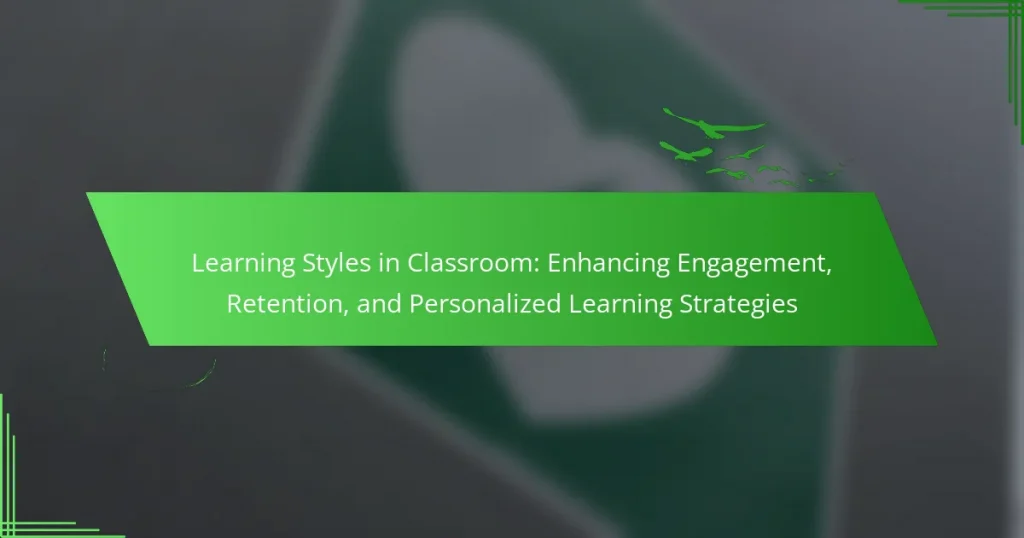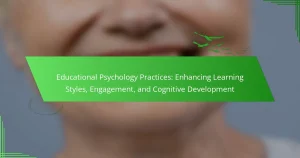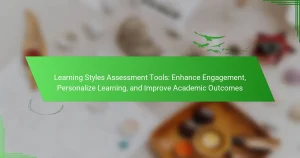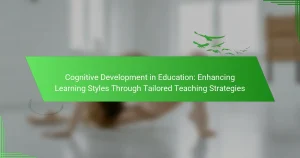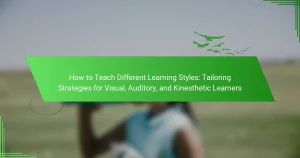Understanding learning styles in the classroom can significantly enhance student engagement and retention. This article explores key learning styles—visual, auditory, and kinesthetic—and their impact on personalized learning strategies. It examines methods like differentiated instruction and adaptive technologies to accommodate diverse preferences. Additionally, it addresses challenges educators face in implementing these strategies effectively.
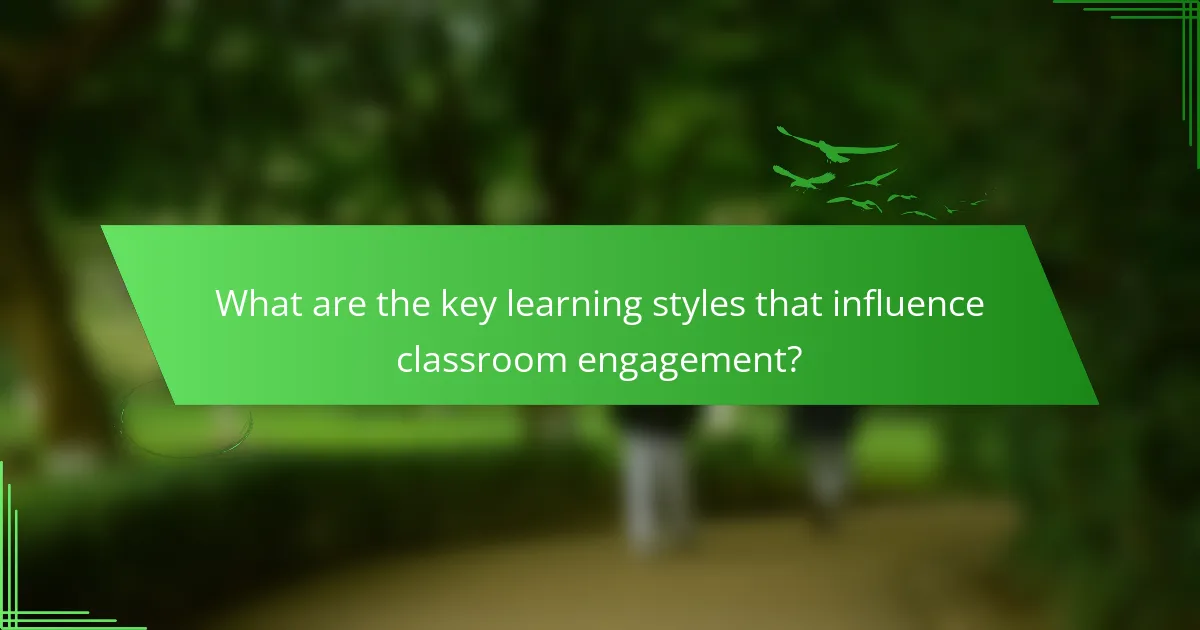
What are the key learning styles that influence classroom engagement?
The key learning styles that influence classroom engagement include visual, auditory, and kinesthetic modalities. These styles impact how students absorb, process, and retain information, ultimately enhancing their learning experience.
Visual learners benefit from diagrams, charts, and videos, which help them visualize concepts. Auditory learners thrive on listening to lectures and discussions, making verbal communication crucial. Kinesthetic learners engage through hands-on activities, fostering a deeper connection to the material.
Understanding these styles allows educators to tailor their teaching strategies, promoting personalized learning that increases student motivation and retention. Adapting instructional methods to accommodate diverse learning preferences can lead to improved academic outcomes and a more dynamic classroom environment.
How do visual, auditory, and kinesthetic learning styles differ?
Visual, auditory, and kinesthetic learning styles differ in how individuals prefer to receive and process information. Visual learners benefit from images and diagrams, auditory learners thrive on listening and discussions, while kinesthetic learners engage through hands-on activities. Each style enhances engagement and retention in personalized learning strategies.
Visual learners often remember information better when it is presented through charts or videos. Auditory learners excel in environments where they can participate in discussions or listen to lectures. Kinesthetic learners need to physically interact with materials to grasp concepts effectively. Understanding these differences allows educators to tailor their teaching methods to meet diverse student needs.
What role does the theory of multiple intelligences play in learning styles?
The theory of multiple intelligences enhances learning styles by recognizing diverse cognitive strengths. It encourages tailored teaching methods that cater to individual preferences, improving engagement and retention. For instance, a student excelling in musical intelligence may benefit from auditory learning strategies, while another strong in spatial intelligence may thrive with visual aids. This personalized approach fosters an inclusive classroom environment, allowing all learners to succeed.
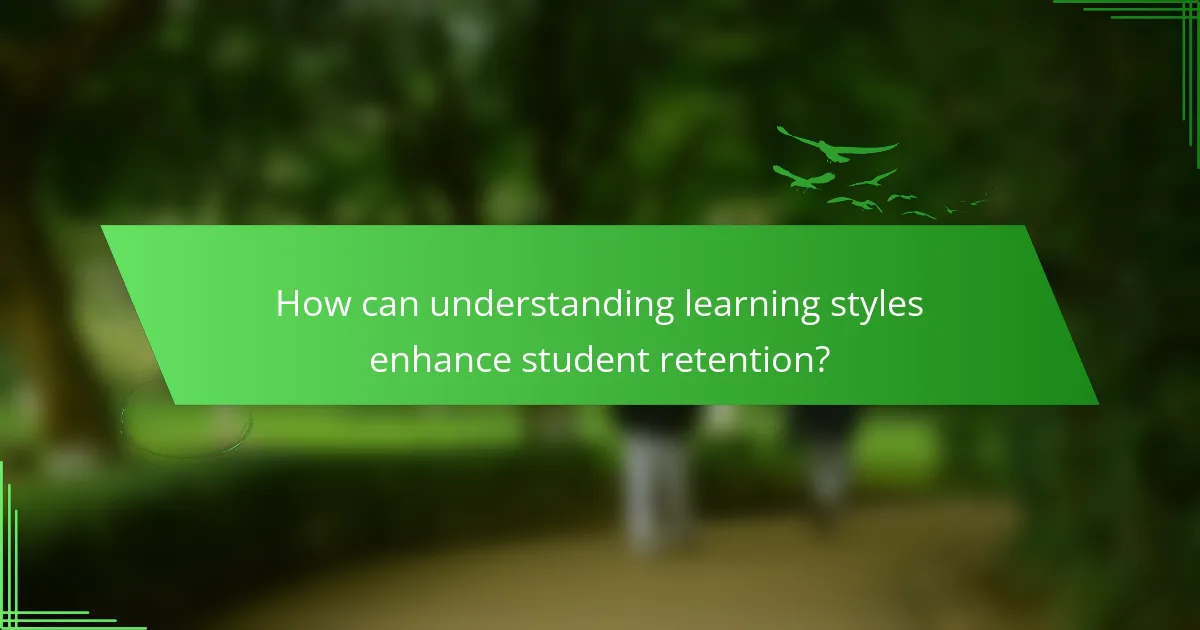
How can understanding learning styles enhance student retention?
Understanding learning styles can significantly enhance student retention by tailoring educational approaches to individual needs. By identifying whether students are visual, auditory, or kinesthetic learners, educators can create more engaging and effective teaching strategies. This personalization fosters a deeper connection to the material, leading to improved retention rates. Research indicates that students who learn in ways that align with their preferred styles are more likely to stay motivated and engaged. Therefore, recognizing and adapting to diverse learning styles is crucial for maximizing educational outcomes.
What evidence supports the link between learning styles and memory retention?
Research indicates that learning styles can enhance memory retention through tailored teaching methods. Studies show that aligning instructional strategies with individual learning preferences leads to improved recall and understanding. For example, a meta-analysis found that students who engage with material in their preferred style demonstrate significantly higher retention rates. Additionally, personalized learning approaches that incorporate visual, auditory, or kinesthetic elements cater to diverse learners, fostering deeper cognitive connections. This evidence suggests that recognizing and utilizing learning styles in the classroom can effectively support memory retention and overall educational outcomes.
How do different learning styles affect information processing?
Different learning styles significantly influence how individuals process information. Visual learners benefit from diagrams and charts, while auditory learners grasp concepts better through discussions and lectures. Kinesthetic learners engage through hands-on activities. Understanding these styles allows educators to tailor strategies, enhancing engagement and retention. For instance, incorporating varied teaching methods accommodates diverse preferences, promoting a more effective learning environment. This personalized approach aligns with unique attributes of each learning style, fostering deeper comprehension and retention of information.
What strategies can teachers use to cater to various learning styles?
Teachers can use diverse strategies to accommodate various learning styles effectively. Incorporating visual aids, hands-on activities, and group discussions enhances engagement for visual, kinesthetic, and auditory learners. Differentiated instruction tailors lessons to individual needs, promoting personalized learning. Assessing student preferences through surveys can guide instructional choices, ensuring all styles are addressed. Utilizing technology, such as educational apps, allows for interactive learning experiences that cater to multiple modalities.
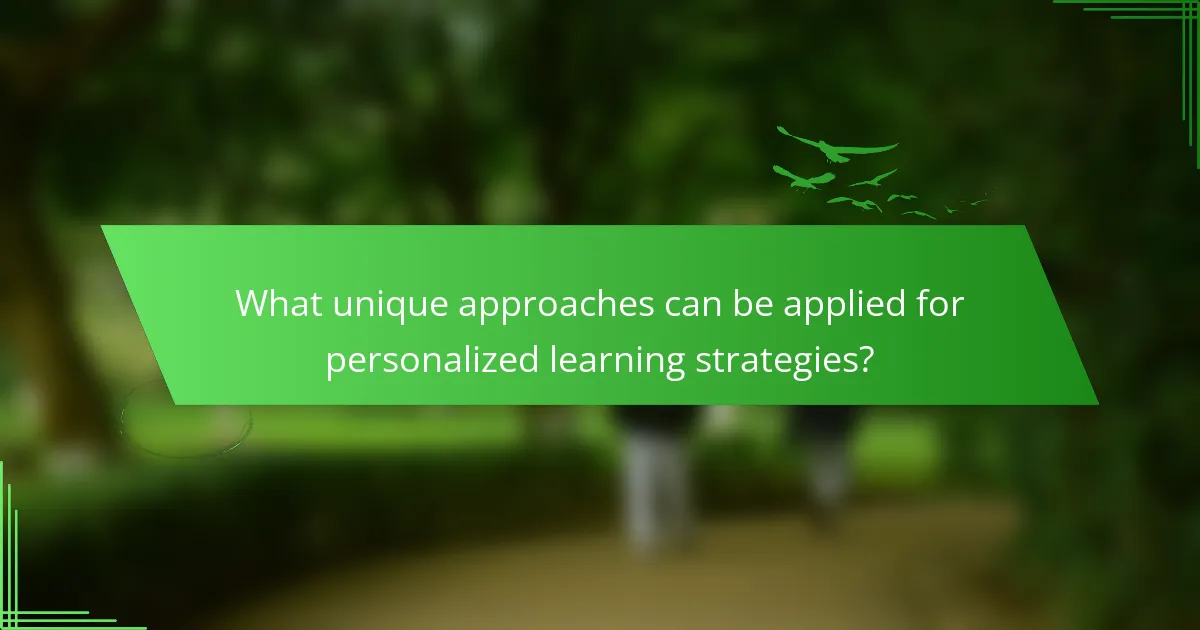
What unique approaches can be applied for personalized learning strategies?
Personalized learning strategies can utilize unique approaches such as differentiated instruction, adaptive learning technologies, and project-based learning. Differentiated instruction tailors lessons to individual learning styles, enhancing engagement. Adaptive learning technologies use data to personalize content delivery, ensuring students progress at their own pace. Project-based learning fosters collaboration and real-world application, promoting deeper understanding. These methods collectively enhance retention and engagement in classroom settings.
How can differentiated instruction be tailored to individual learning styles?
Differentiated instruction can be tailored to individual learning styles by incorporating diverse teaching methods that align with each student’s preferred way of learning. Strategies include using visual aids for visual learners, interactive activities for kinesthetic learners, and discussions or readings for auditory learners.
Assessing students’ learning preferences through surveys or observations helps educators customize their approaches effectively. By adapting content delivery, assignments, and assessments, teachers can enhance engagement and retention. For instance, integrating technology can cater to various styles, offering personalized learning experiences.
Ultimately, recognizing and addressing the unique attributes of each learning style fosters a more inclusive and effective educational environment. This approach not only supports individual growth but also promotes a collaborative classroom culture.
What technology tools support personalized learning based on learning styles?
Technology tools that support personalized learning based on learning styles include adaptive learning platforms, learning management systems, and interactive educational software. These tools analyze student performance and preferences to tailor content delivery. For example, platforms like DreamBox and Smart Sparrow adjust lessons in real-time based on individual learning styles. Additionally, data analytics in tools like Google Classroom can identify trends in student engagement, enhancing personalized strategies. Overall, these technologies foster a customized educational experience that aligns with diverse learning preferences.
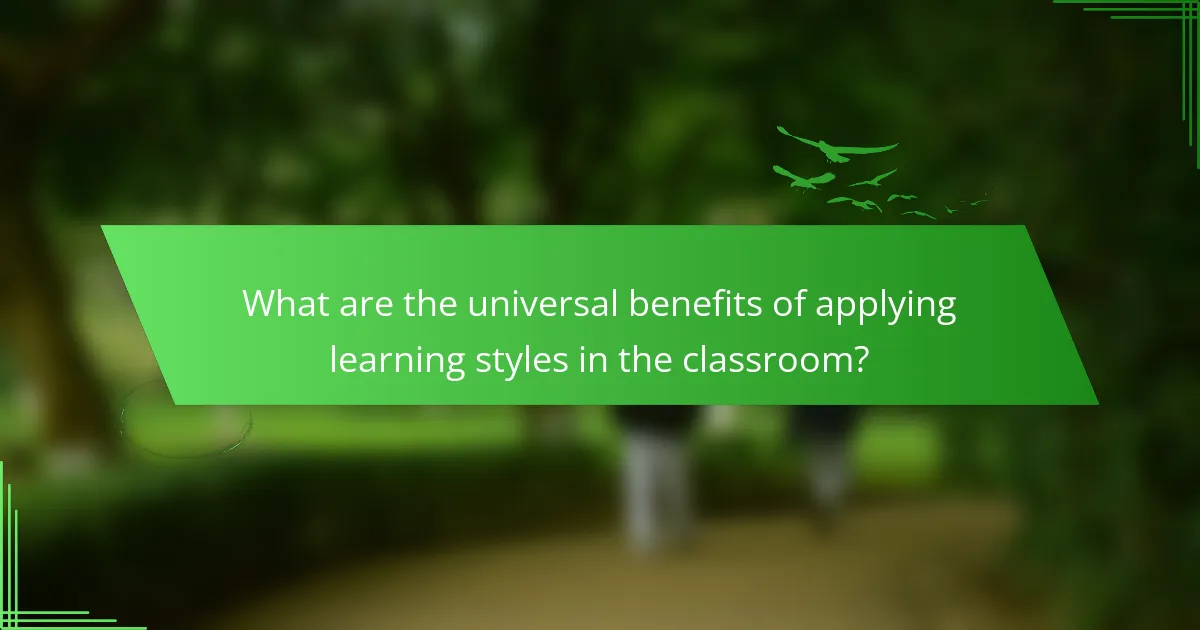
What are the universal benefits of applying learning styles in the classroom?
Applying learning styles in the classroom enhances engagement, retention, and personalized learning strategies. By recognizing individual learning preferences, educators can tailor their teaching methods to improve student understanding and motivation.
One universal benefit is increased student engagement. When lessons align with a student’s preferred learning style, they are more likely to participate actively. This involvement fosters a deeper connection to the material, enhancing retention.
Another significant advantage is improved information retention. Learning styles help students grasp concepts more effectively, as they can relate new information to their existing knowledge base. This connection leads to better long-term memory.
Personalized learning strategies are also a key benefit. By accommodating different learning styles, teachers can create a more inclusive environment. This approach ensures that all students, regardless of their preferred learning method, receive the support they need to succeed.
How do learning styles promote student engagement and motivation?
Learning styles enhance student engagement and motivation by catering to individual preferences. Tailoring teaching methods to match diverse learning styles increases participation and retention rates. For example, visual learners benefit from diagrams, while auditory learners excel with discussions. This personalized approach fosters a supportive environment, encouraging students to take ownership of their learning. Research indicates that when students connect with content through their preferred learning style, they demonstrate higher motivation and improved academic performance.
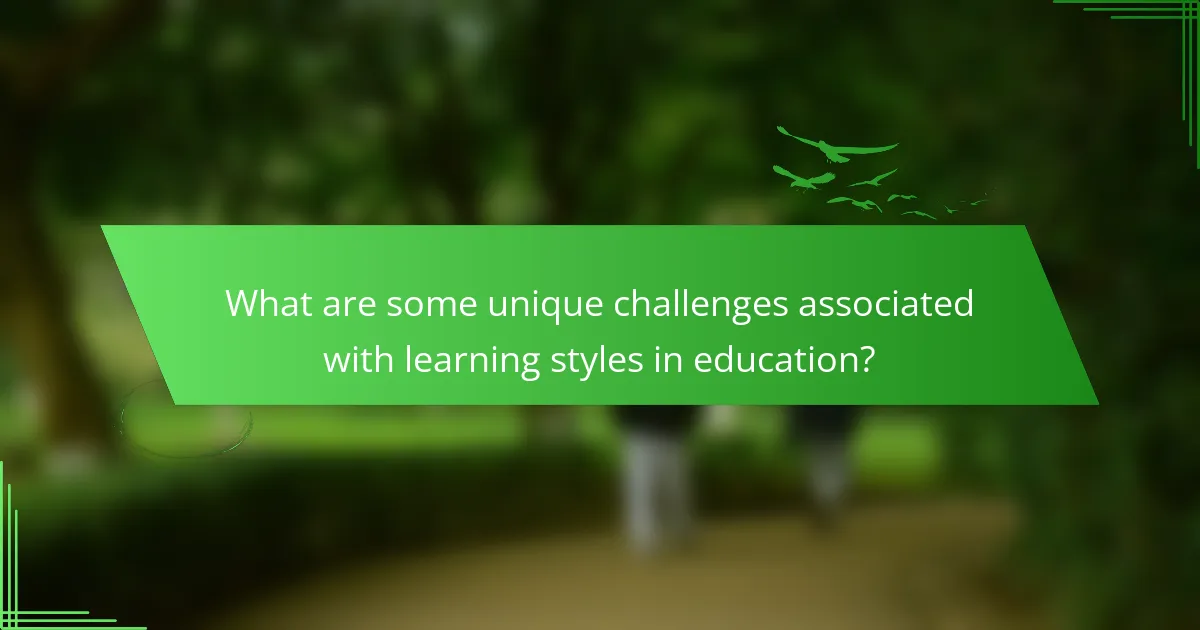
What are some unique challenges associated with learning styles in education?
Unique challenges in learning styles include the difficulty of accommodating diverse preferences, potential misconceptions about effectiveness, and the risk of oversimplifying student needs. Educators often face obstacles in implementing personalized strategies that truly engage each learner. Additionally, reliance on fixed learning styles can hinder adaptability, limiting the effectiveness of teaching methods. Understanding these challenges is crucial for enhancing retention and engagement in the classroom.
How can misconceptions about learning styles hinder effective teaching?
Misconceptions about learning styles can significantly hinder effective teaching by promoting a one-size-fits-all approach. Educators may overlook individual student needs, leading to disengagement and reduced retention. Research indicates that tailoring instruction to diverse learning preferences does not enhance outcomes as previously believed. This misunderstanding can result in wasted resources and ineffective teaching strategies, ultimately diminishing the learning experience.

What rare attributes should educators consider when implementing learning styles?
Educators should consider rare attributes such as cultural influences, emotional intelligence, and neurodiversity when implementing learning styles. These factors can significantly impact student engagement and retention. Understanding how cultural backgrounds shape learning preferences allows for more inclusive strategies. Additionally, integrating emotional intelligence can foster a supportive environment, enhancing collaboration. Acknowledging neurodiversity ensures that diverse cognitive processes are recognized, promoting personalized learning paths tailored to individual needs.
How can cultural differences influence learning style preferences?
Cultural differences significantly influence learning style preferences by shaping how individuals engage with information. For instance, collectivist cultures may favor collaborative learning, while individualistic cultures might emphasize independent study. These preferences can impact classroom dynamics and retention rates. Understanding these variations allows educators to tailor strategies that enhance engagement and support diverse learning needs.
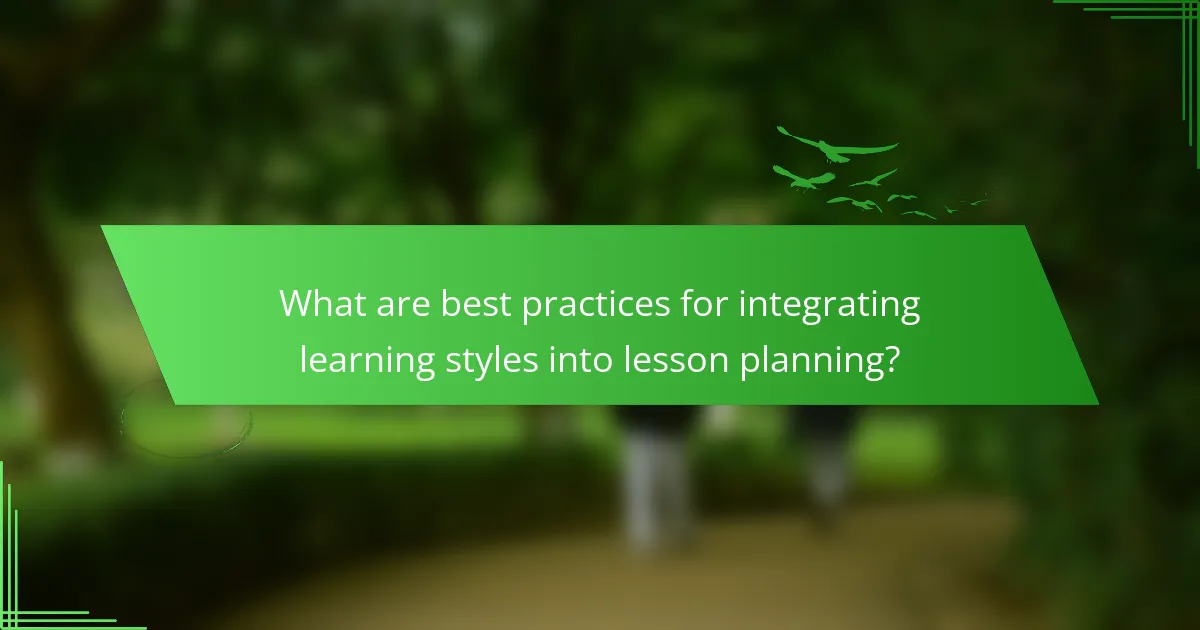
What are best practices for integrating learning styles into lesson planning?
To effectively integrate learning styles into lesson planning, educators should employ diverse teaching strategies tailored to individual preferences. This enhances student engagement and retention.
First, assess students’ learning styles through surveys or observations. This data will guide lesson design, ensuring materials and activities cater to visual, auditory, and kinesthetic learners.
Next, incorporate a variety of instructional methods. For example, use multimedia presentations for visual learners, group discussions for auditory learners, and hands-on activities for kinesthetic learners. This approach addresses the unique needs of each student.
Additionally, provide opportunities for personalized learning. Allow students to choose project topics or formats that resonate with their learning style. This autonomy fosters motivation and deeper understanding.
Finally, regularly evaluate the effectiveness of your strategies. Collect feedback from students to adjust lesson plans and improve engagement continuously. This iterative process ensures that teaching methods remain relevant and effective.
What common mistakes should educators avoid when addressing learning styles?
Educators should avoid overgeneralizing learning styles, as this can limit personalized approaches. Focusing exclusively on one style can neglect diverse student needs. Ignoring evidence-based practices in favor of unproven theories reduces effectiveness. Additionally, failing to adapt teaching methods dynamically can hinder engagement and retention. Lastly, not assessing student progress regularly may result in missed opportunities for tailored support.
How can teachers assess and adapt to the diverse learning styles in their classroom?
Teachers can assess and adapt to diverse learning styles by employing varied instructional strategies. Utilizing assessments such as surveys or observations helps identify students’ preferred learning styles. Tailoring lessons to include visual, auditory, and kinesthetic elements enhances engagement. Incorporating technology, like interactive tools, can cater to different preferences. Regular feedback and flexible grouping allow for personalized learning experiences, ensuring all students thrive.
